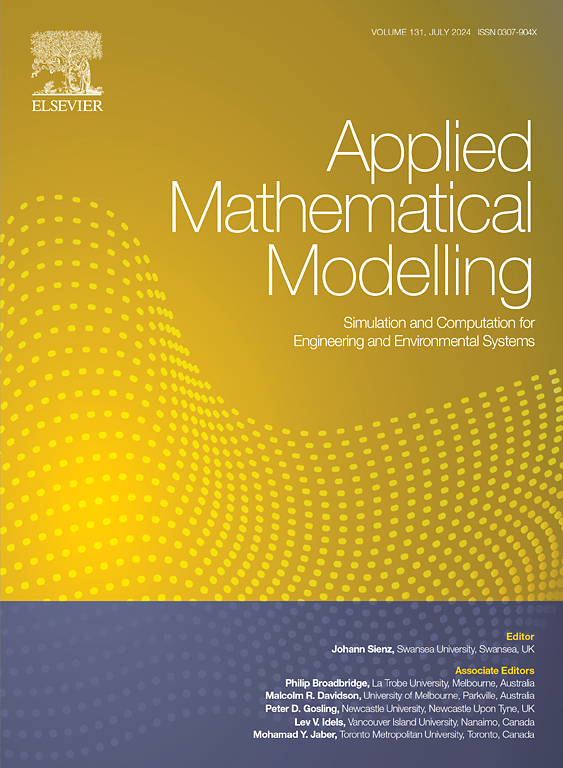Reduced-order modeling of Hamiltonian formulation in flexible multibody dynamics: Theory and simulations
IF 4.4
2区 工程技术
Q1 ENGINEERING, MULTIDISCIPLINARY
引用次数: 0
Abstract
Flexible multibody dynamics has been developed as an effective method for analyzing mechanical structures, wherein the Hamiltonian formulation draws attention for advantages such as the systematic handling of systems with varying mass. However, the utilization of the finite element method typically results in a large number of variables, which deteriorates computational efficiency. An effective method to reduce the number of variables (coordinates and canonical conjugate momentum) in Hamiltonian formulation needs to be presented. This paper proposes a novel reduced-order modeling of the Hamiltonian formulation based on the component mode synthesis method. A novel definition of momentum is proposed to construct the equation of motion. Compared with conventional Hamiltonian formulations, not only generalized coordinates but also momentum is reduced. By combining the absolute nodal coordinate formulation with the proposed formulation, it is applicable to analyze nonlinear structures with large deformation and rotations. Four numerical simulations were conducted to evaluate the performance of the proposed formulation, and calculation time reductions of 52.1 %, 83.6 %, 93.4 %, and 81.5 % were achieved. Overall, the proposed Hamiltonian formulation exhibits high calculation efficiency, good numerical stability, and high accuracy.
求助全文
约1分钟内获得全文
求助全文
来源期刊

Applied Mathematical Modelling
数学-工程:综合
CiteScore
9.80
自引率
8.00%
发文量
508
审稿时长
43 days
期刊介绍:
Applied Mathematical Modelling focuses on research related to the mathematical modelling of engineering and environmental processes, manufacturing, and industrial systems. A significant emerging area of research activity involves multiphysics processes, and contributions in this area are particularly encouraged.
This influential publication covers a wide spectrum of subjects including heat transfer, fluid mechanics, CFD, and transport phenomena; solid mechanics and mechanics of metals; electromagnets and MHD; reliability modelling and system optimization; finite volume, finite element, and boundary element procedures; modelling of inventory, industrial, manufacturing and logistics systems for viable decision making; civil engineering systems and structures; mineral and energy resources; relevant software engineering issues associated with CAD and CAE; and materials and metallurgical engineering.
Applied Mathematical Modelling is primarily interested in papers developing increased insights into real-world problems through novel mathematical modelling, novel applications or a combination of these. Papers employing existing numerical techniques must demonstrate sufficient novelty in the solution of practical problems. Papers on fuzzy logic in decision-making or purely financial mathematics are normally not considered. Research on fractional differential equations, bifurcation, and numerical methods needs to include practical examples. Population dynamics must solve realistic scenarios. Papers in the area of logistics and business modelling should demonstrate meaningful managerial insight. Submissions with no real-world application will not be considered.
 求助内容:
求助内容: 应助结果提醒方式:
应助结果提醒方式:


